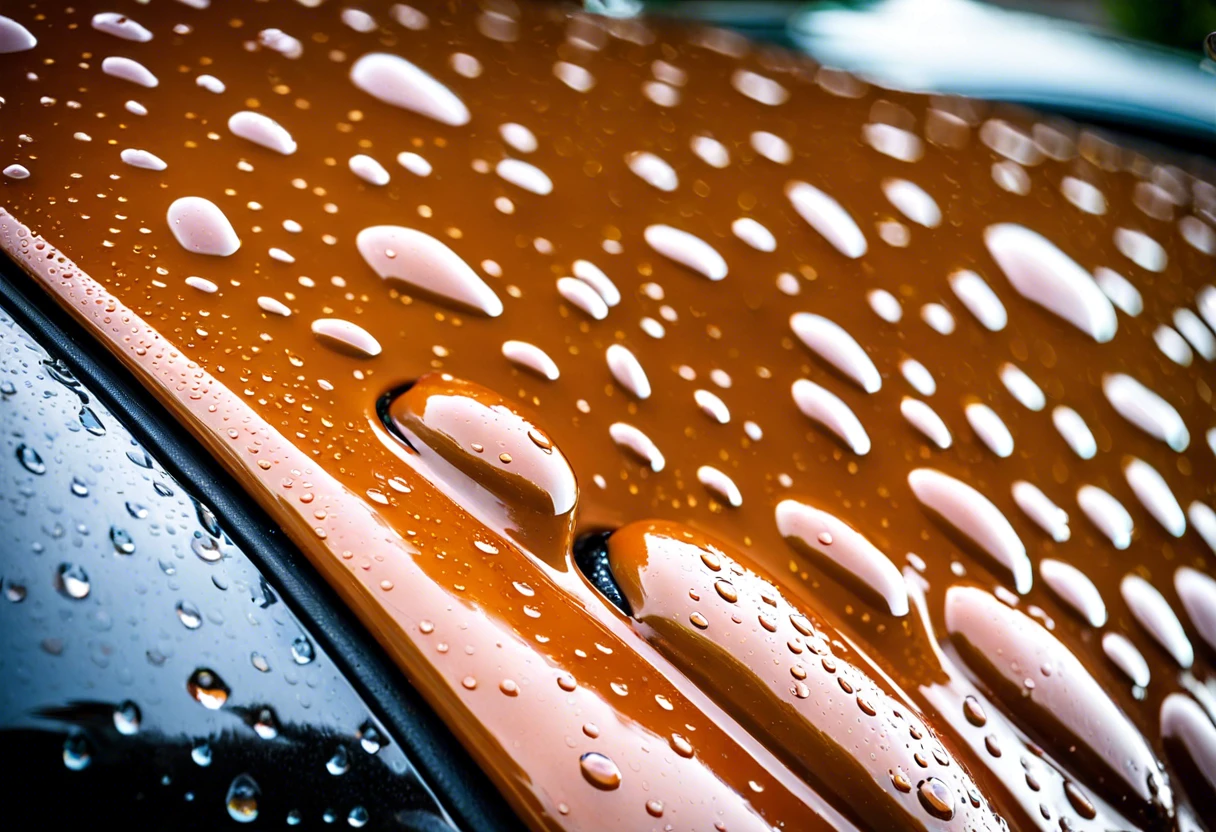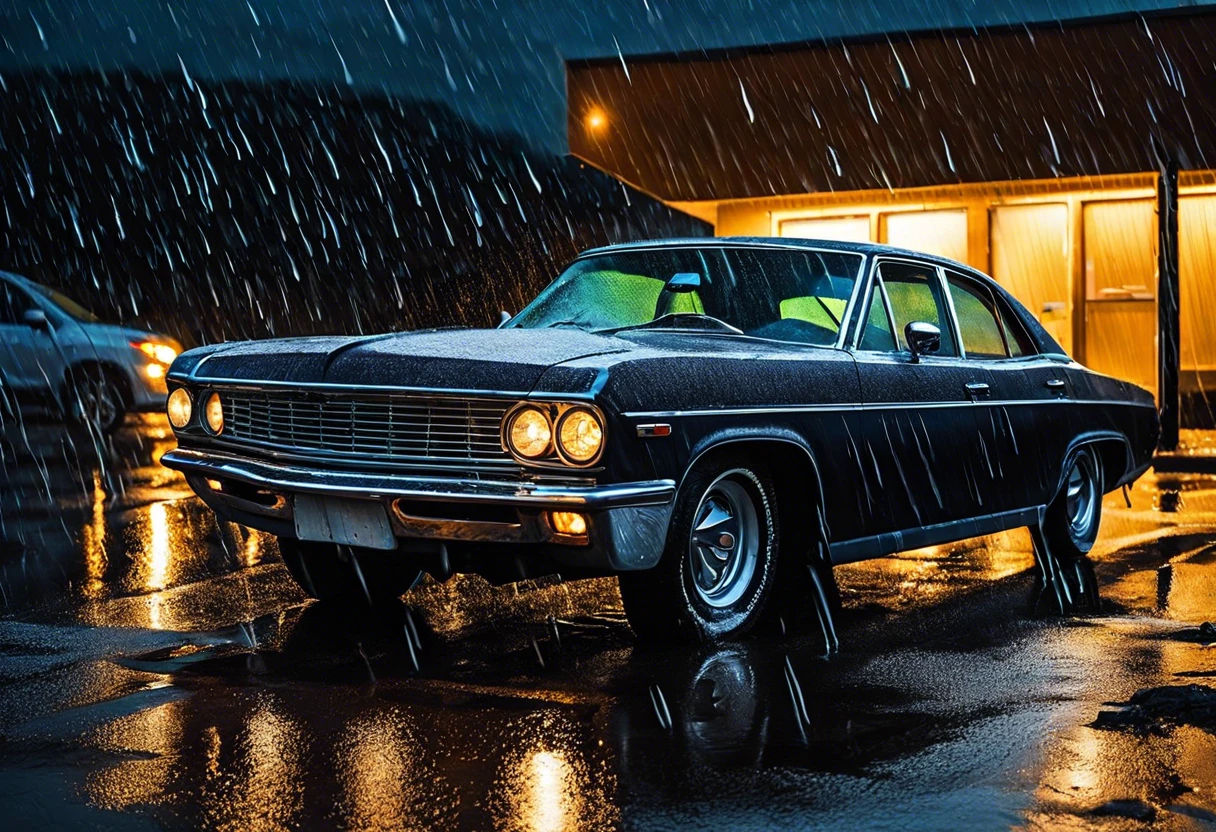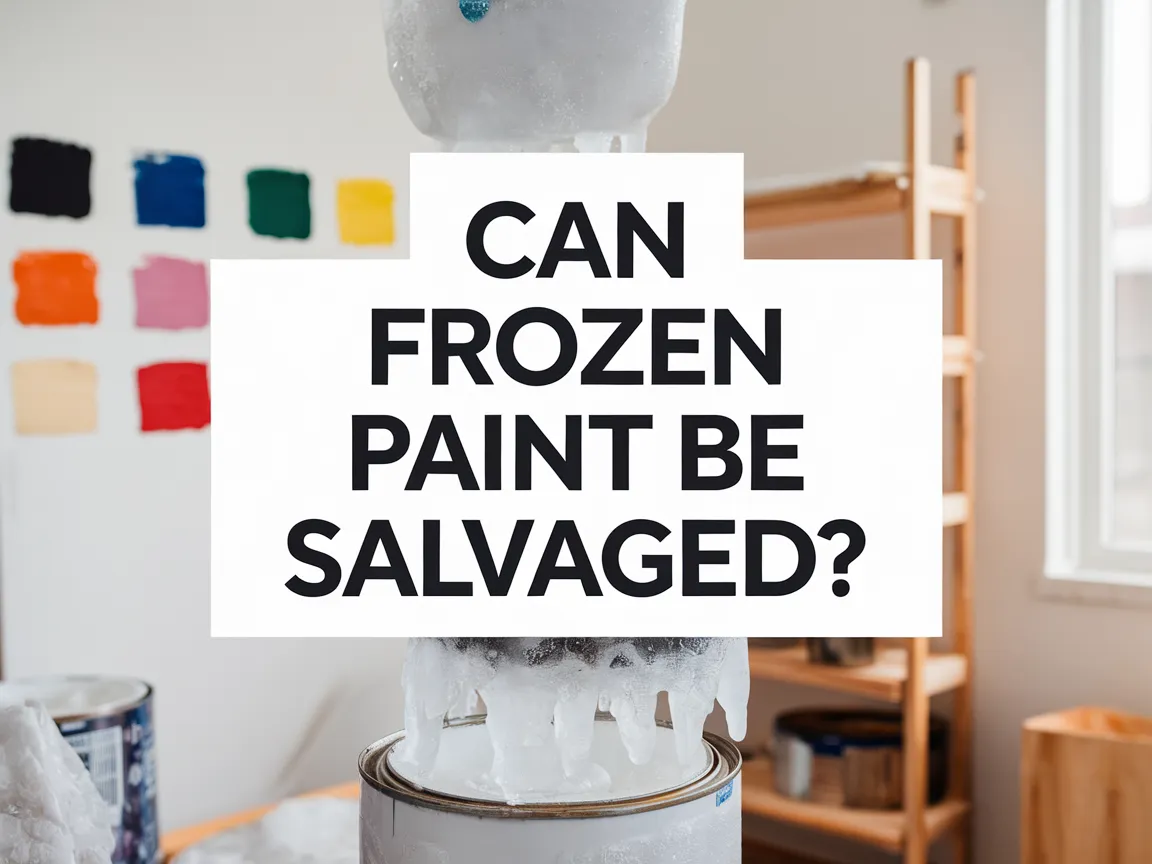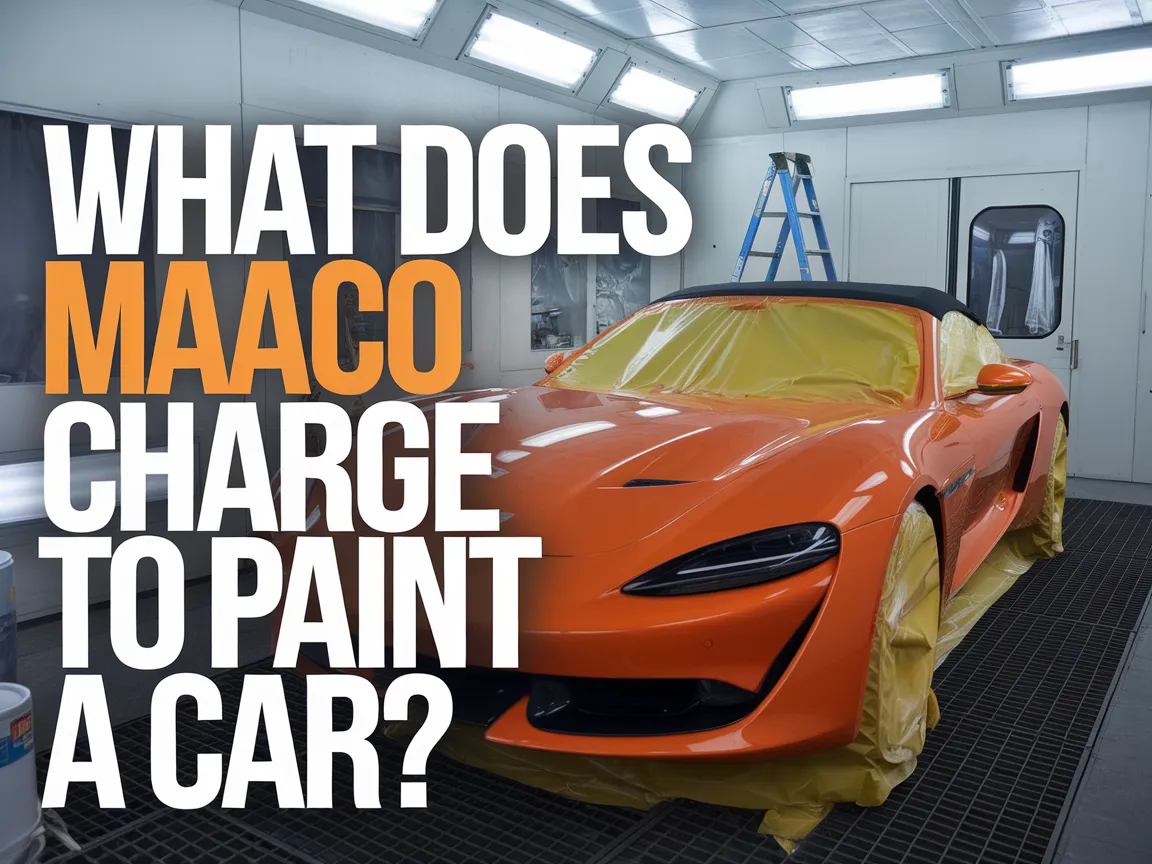Can Rain Damage Car Paint?
Car paint is that shiny color on your car, like a soft blanket hugging a toy. It’s what makes a car look beautiful and protects it, too!
You might wonder, can rain damage car paint? It’s important to know because I once saw my friend’s car get ruined by rain, leaving ugly spots everywhere. Since then, I pay close attention to how rain affects my ride.
In this guide, we’ll explore the impact of rain on car paint, ways to protect it, common issues like flaking paint, and how to fix paint runs on cars. Get ready to dive into tips and tricks to keep your car looking fabulous!
Contents
- 1 Can Rain Damage Car Paint?
- 2 What is Car Paint?
- 3 Before You Start
- 4 Steps to Protect Your Car Paint From Rain Damage
- 5 Types Of Rain Damage Related to Car Paint
- 6 Can Different Types of Rain Affect Your Car Paint?
- 7 Impact of Rain on Different Car Paint Finishes
- 8 Factors Affecting the Severity Of Rain Damage on Car Paint
- 9 Common Issues When Considering Rain Damage to Car Paint
- 10 How Does Rain Impact Car Wax and Sealants?
- 11 What Types of Rain Damage Repairs Are Available?
- 12 Signs of Rain Damage You Shouldn’t Ignore
- 13 Finishing Touches for Maintaining Your Car’s Paint
- 14 FAQ
- 15 Conclusion
- 16 Additional Resources
Can Rain Damage Car Paint?
Yes, rain can damage car paint. Acid rain contains pollutants that can eat away at the surface. Additionally, dirty water splashes can leave stains. Regular washing and waxing help protect your car’s finish. When temperatures drop, painting your car requires special precautions to protect paint during cold weather.
The Finishing Touch
A freshly painted wall is a blank canvas. The best way to bring your room to life is with a single piece of statement art that ties everything together.
Browse Wall Art at Big Wall DecorWhat is Car Paint?
Car paint is a specially formulated coating that protects a vehicle’s surface. It typically consists of a base coat, clear coat, and sometimes a primer, with each layer averaging about 50-100 micrometers (0.05-0.1 Millimeters) in total thickness. Understanding car paint composition and protection is crucial for maintaining a vehicle’s aesthetic and structural integrity.
Can rain damage car paint? I once parked my brand-new car in a rainstorm, and when I checked it afterward, I noticed tiny water spots. It got me wondering how the elements affect a vehicle’s finish over time. If you’re looking to protect your car’s exterior, exploring high-quality exterior paint options can make a significant difference in maintaining your vehicle’s appearance.
Since then, I’ve used car paint protection sprays. These products can prevent issues like peeling paint or bubbled surfaces. I’ve heard stories of people struggling with bad touch-up paint on cars—it’s a hassle! Paying around $150 (About 140 USD) to fix car paint isn’t fun. If you’re curious about alternative paint techniques, painting methods offer creative solutions. Remember, prevention is key!
Before You Start
What do you need to prevent rain damage to your car’s paint?
- Car Wax: Use a quality wax, like Meguiar’s Gold Class, to protect your paint. It creates a barrier against moisture.
- Microfiber Towels: Get soft towels, such as AmazonBasics, to avoid scratches while drying your car after rain.
- Paint Sealant: A product like Chemical Guys JetSeal helps protect your paint from water spots and damage.
- Hydrophobic Spray: Use products like Gtechniq G5, which repel water and keep your paint cleaner for longer.
That covers essential preparations for your vehicle. Let’s now take a look at steps to safeguard your car’s paint from rain damage.
Also See: Can You Throw Away Paint? Dispose Of It Responsibly!
The Finishing Touch
A freshly painted wall is a blank canvas. The best way to bring your room to life is with a single piece of statement art that ties everything together.
Browse Wall Art at Big Wall Decor
Steps to Protect Your Car Paint From Rain Damage
Here are steps to keep your car in top condition despite rain. Take these important actions if you think rain could damage your car’s paint.
-
Assess Your Vehicle’s Current Condition
Check the paint for existing damage like scratches or chips. Small imperfections can worsen after rain exposure, especially if pebbles or debris remain in those gaps.
A thorough evaluation helps you spot issues early. Rain can amplify these problems, leading to higher repair costs.
-
Wash and Dry Your Car Thoroughly
Clean your car with pH-balanced car wash soap to remove dirt and grime, preventing further damage to your paint. Use a clean microfiber cloth for drying, as traditional rags can scratch the surface. If you’re wondering about proper paint maintenance techniques, protecting your paint’s finish requires careful attention to cleaning methods.
Wipe every nook and cranny. Even if rain comes back quickly, a clean surface helps protect your paint longer.
-
Apply a Protective Wax or Sealant
Coat your vehicle with quality wax or sealant to create a barrier against rain and other elements. Look for products with carnauba wax, known for its longevity, offering protection for up to six months.
This is a game changer! I’ve noticed that after using sealant regularly, my paint stays shinier and is less prone to rainy weather damage.
-
Consider Using a Car Cover
If rain is coming, investing in a breathable car cover could protect your paint. Choose a cover designed for outdoor use that shields against moisture while allowing condensation to escape.
The right cover can also prevent scratches from wind-driven debris. Just remember to remove it before water accumulates to avoid trapping moisture and creating an environment for mold.
So far we covered measures to safeguard your car’s paint from rain. Let’s look at the various types of rain damage next.
Types Of Rain Damage Related to Car Paint
Let’s discuss types of rain damage: water spots, chemical damage, fading, and rust.
-
Water Spots
Water spots occur when rainwater dries on the paint surface, leaving mineral deposits. These can etch into the paint, causing long-term damage if not cleaned promptly.
-
Chemical Damage
Rain often mixes with pollutants like acid from air pollution. This acidic rain can corrode car paint quickly, especially if your vehicle is frequently exposed, leading to noticeable deterioration.
-
Fading
UV rays in rain can weaken car paint over time, causing it to fade. Dark colors show this effect more, losing shine and creating an uneven appearance.
-
Rust
When rainwater seeps through paint chips or scratches, it promotes rust formation. Over time, this can cause severe structural damage, affecting your car’s performance and appearance.
Reflecting on my experiences, one thing stands out about rust. I once ignored a tiny scratch, and it turned into a significant rust spot that cost hundreds to fix.
We’ve wrapped up the various types of rain damage related to car paint here. Let us turn our attention to how different rain types can affect your car’s finish.
Can Different Types of Rain Affect Your Car Paint?
Not all rain is created equal! Let’s break down how various types can impact your car paint differently.
-
Acid Rain
It’s a nasty mix of rain and pollutants. Acid rain can quickly corrode paint, leading to permanent damage. Regular washes can help combat its effects.
-
Hard Rain
Heavy rain often carries debris, which can scratch your paint. Quick action after a hard rain, like rinsing off dirt, can save your finish.
-
Soft Rain
Generally gentle, soft rain doesn’t pose as much risk. But it can still leave mineral spots, especially if it evaporates on your car.
We’ve wrapped up how various rain types affect your car’s paint. Let us turn our attention to the impact on different finishes.

Impact of Rain on Different Car Paint Finishes
How does rain affect various car paint finishes? Let’s explore!
| Paint Finish | Rain Impact | Recommended Protection |
|---|---|---|
| Glossy Finish | More visible water spots | Frequent waxing |
| Satin Finish | Can become streaky | Use matte-specific sealants |
| Metallic Finish | May dull over time | Apply synthetic sealant |
| Matte Finish | Prone to water spots | Avoid wax; use matte-specific products |
Factors Affecting the Severity Of Rain Damage on Car Paint
What factors influence how rain affects your car’s paint finish?
-
Type of Rain: Acidic rain can strip protective layers from the car, accelerating damage.
-
Duration of Exposure: Prolonged exposure allows rain to soak in, leading to more severe paint deterioration.
-
Temperature Changes: Rapid temperature shifts can cause paint to crack, promoting peeling and flaking.
-
Previous Paint Condition: Damaged or old paint is more vulnerable to rain, increasing the chances of bubbles and cracks.
Common Issues When Considering Rain Damage to Car Paint
Last month, my friend found that acid rain can damage her car’s paint. She felt devastated seeing dull spots forming on her shiny ride! It’s enough to make anyone cringe, right?
To fix it, wash the affected areas with a pH-neutral soap, use a clay bar treatment, and then wax. You’ll spend about $50 (USD) on materials and four hours of effort. Trust me; it’s worth it!
The Finishing Touch
A freshly painted wall is a blank canvas. The best way to bring your room to life is with a single piece of statement art that ties everything together.
Browse Wall Art at Big Wall Decor
How Does Rain Impact Car Wax and Sealants?
Rain doesn’t just affect car paint; it also interacts with wax and sealants. Here’s why you should care.
-
Wax Residue
Wax can act like a protective layer, but rain can wash away the top layer if it’s not reapplied often. You could lose that shiny look in just a week if you don’t keep up!
-
Effectiveness of Sealant
Some sealants last longer than wax. High-quality sealants can protect against water spots for up to 6 months, but they may need reapplication after heavy rain to maintain effectiveness.
-
Be Cautious with Rinsing
After rain, be careful when rinsing your car. Hard water can leave behind mineral spots that stick to your freshly waxed surface.
What Types of Rain Damage Repairs Are Available?
If rain has done a number on your car’s paint, you’ve got some repair options!
| Repair Type | Description | Estimated Cost (USD) | Time Required |
|---|---|---|---|
| Spot Repair | Fix small scratches or chips using touch-up paint. | $50 – $150 | 1 – 2 hours |
| Polishing | Buff out minor water spots and hazing. | $75 – $200 | 1 – 3 hours |
| Full Respray | Repaint entire areas suffering from significant damage. | $500 – $1,500 | 1 – 3 days |
Signs of Rain Damage You Shouldn’t Ignore
Wondering if the rain has hurt your paint? Here are some red flags:
- Visible Water Spots: Staining from leftover mineral deposits.
- Texture Change: The paint feels rough instead of smooth.
- Color Fading: A noticeable difference in color, usually lighter or duller.
- Rust Formation: Look for orange spots or flaking on metal parts.
Finishing Touches for Maintaining Your Car’s Paint
After you’ve assessed the damage from rainfall, apply a quality wax or sealant within 24 hours to protect your car’s paint. Use products like Meguiar’s Ultimate Wax (473 Ml, 16 Fl. Oz.) for optimal defense. If paint damage persists, you might want to explore effective paint removal techniques.
Inspect your car, focusing on the clear coat—1.5 to 2.0 mils (0.0015 To 0.0020 Inches) is ideal. Use a micrometer gauge to check this and catch any early signs of deterioration.
If you’ve dealt with rain-related issues before, consider a spray-on polymer sealant with 4-6 months of durability. Non-abrasive options like Chemical Guys HydroSlick make maintenance quick and efficient.
FAQ
Frequently Asked Questions About Rain Damage to Car Paint
Now let us look at some questions I typically get asked.
Can You Wrap a Car With Paint Damage?
Yes, you can wrap a car with paint damage. However, the wrap may not adhere well if the damage is significant, like deep scratches or rust, leading to early peeling. In fact, repairs can cost between $300 and $1,500, depending on the extent of the damage.
What Causes Spider Cracks in Car Paint?
Spider cracks in car paint are caused by a few factors, such as dull UV exposure and poor paint application. These cracks can develop when paints don’t cure properly or have defective layers. Often, this results in having to repaint an entire panel, costing around $500 on average.
How Much is It to Fix Paint on a Car?
The cost to fix paint on a car typically ranges from $50 to $1,500, depending on the damage’s severity. For example, minor scratches might only need touch-up paint, while complete repainting could be necessary for large dents or extensive wear. If you’re dealing with specialized surfaces like painting alloy rims professionally, the process requires specific techniques and expertise.
How to Fix Bad Touch-up Paint on a Car?
To fix bad touch-up paint on a car, you should first sand the area lightly and clean it. Then, you can apply high-quality paint and use clear coat for a smooth finish. An average DIY touch-up can save you about $100 compared to a professional job. If paint accidentally stains your clothing during the process, you can quickly remove paint from fabric.
How to Fix Flaking Paint on the Car?
To fix flaking paint on a car, you should remove the loose paint first, sand the area, and then apply primer followed by the right paint shade. It’s crucial because failing to fix it can escalate repainting costs, which typically costs up to $1,500.
Also See: Can Acetone Damage Car Paint? Find Out Before Using!
Conclusion
We’ve covered a lot, so thank you for staying with us. We’ve explored car paint types, strategies for safeguarding against rain damage, suggested color palettes, factors influencing damage severity, common problems, finishing touches, and a variety of DIY project ideas.
In summary, rain can indeed harm car paint due to factors such as acidity and contamination. If you have any further questions about car paint, feel free to reach out for assistance.
For more comprehensive insights on protective techniques, check out Paint Answers.
Additional Resources
- Gurney, J. (2009). Color and Light: A Guide for the Realist Painter. Kansas City, MO: Andrews McMeel Publishing.
- Preventing Damage: Why You Should Wash Your Car After It Rains
- How to Protect Your Car Paint During the Rainy Season
- Is it OK to leave your car in the rain? – Quora









